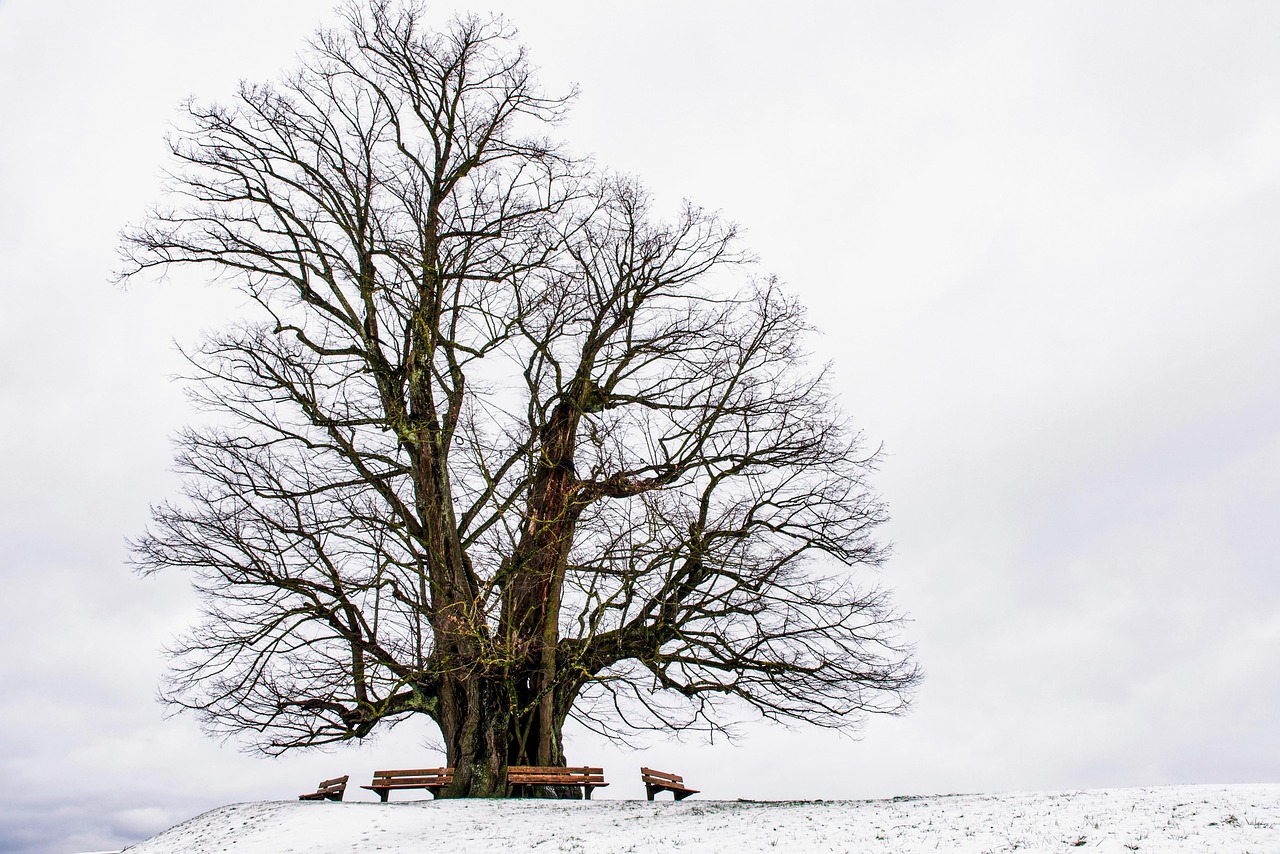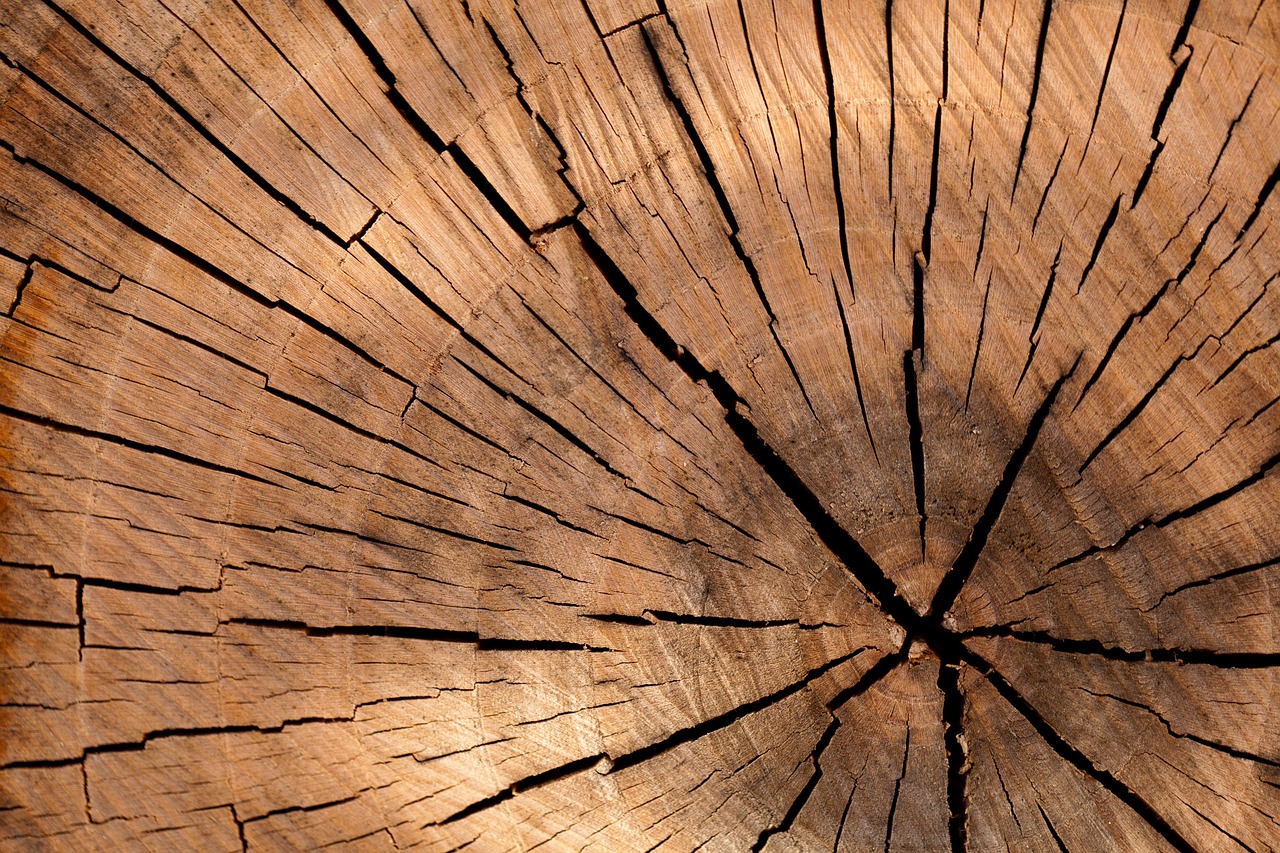Verawood trees (Bulnesia sarmientoi) exhibit a slow to moderate growth rate, typically reaching maturity in 40 to 50 years. Under optimal conditions, they can grow about 1 to 2 feet annually. Their dense timber, prized for its durability and resistance to decay, makes them valuable for woodworking and construction, but the long growth period requires patience for sustainable harvesting.
Verawood trees (Bulnesia sarmientoi) have a moderate growth rate, typically reaching maturity in 20 to 30 years under ideal conditions. These trees can grow up to 40 feet tall and produce dense timber prized for its durability.
Understanding Verawood Trees
Verawood trees are native to South America, particularly found in regions like Argentina and Paraguay. They thrive in tropical and subtropical climates, making them suitable for areas with warm temperatures and adequate rainfall. The wood harvested from these trees is renowned for its strength and resistance to decay, which makes it highly sought after for various applications, including furniture, flooring, and musical instruments.

The growth rate of Verawood trees is influenced by several factors, including soil quality, water availability, and environmental conditions. Understanding these factors is essential for those interested in cultivating Verawood for timber production.
Key Factors Influencing Growth Rate
Several elements play a crucial role in determining the growth rate of Verawood trees. Here are the primary factors:
- Soil Type: Well-drained sandy or loamy soils support optimal growth.
- Water Availability: Regular watering, especially during dry spells, can significantly enhance growth.
- Climate: Warm temperatures and sufficient humidity promote faster growth rates.
- Sunlight: Full sunlight exposure encourages robust growth and healthy tree development.
Growth Characteristics
When discussing the growth characteristics of Verawood trees, it’s essential to consider their physical attributes as they mature. Here are some notable characteristics:

| Characteristic | Description |
|---|---|
| Height | Can grow up to 40 feet tall. |
| Diameter | Can reach a diameter of 2 feet or more at maturity. |
| Leaf Structure | Pinnately compound leaves that are dark green and glossy. |
| Flowering | Produces small, yellow flowers that attract pollinators. |
Timber Quality and Uses
The timber derived from Verawood is exceptionally dense and durable. Its unique properties make it ideal for various applications:
- Furniture: Highly valued for high-end furniture pieces due to its aesthetic appeal and durability.
- Flooring: Used in flooring applications where resilience is critical.
- Craftsmanship: Favored by artisans and craftsmen for creating intricate designs and carvings.
The high density of Verawood also means that it can be challenging to work with. Tools need to be well-maintained to handle the toughness of the wood. However, the final products are often worth the extra effort due to the beauty and longevity of the timber.
Growth Rate Comparisons
When considering Verawood for timber production, it’s beneficial to compare its growth rate with other similar species. Here’s a brief comparison with other common hardwoods:

| Tree Species | Average Growth Rate (Years to Maturity) | Timber Density (lbs/ft³) |
|---|---|---|
| Verawood | 20-30 | 65-75 |
| Oak | 30-50 | 45-55 |
| Bamboo | 3-5 | 30-50 |
| Mahogany | 25-35 | 35-45 |
This table illustrates that while Verawood has a moderate growth rate, its density makes it a valuable option for dense timber production compared to other species. Selecting the right tree species is crucial for sustainable forestry practices and timber quality.
The cultivation of Verawood trees can be an excellent choice for landowners looking to invest in timber production. Understanding their growth requirements will help ensure successful growth and a sustainable yield of high-quality timber over time.
Soil Requirements for Verawood Trees
The success of Verawood tree cultivation largely depends on the quality of the soil. These trees thrive best in specific soil conditions that promote healthy growth and high timber yield. Understanding the preferred soil characteristics can help farmers and landowners cultivate Verawood trees more effectively.

Ideal Soil Conditions
Verawood trees prefer well-drained soils rich in organic matter. Here are some critical aspects of ideal soil conditions for Verawood:
- Drainage: Excellent drainage is essential. Poorly drained soils can lead to root rot and other diseases.
- pH Level: A slightly acidic to neutral pH level (between 6.0 and 7.0) is optimal for growth.
- Nutrient Content: Soils rich in nitrogen, phosphorus, and potassium promote vigorous growth.
- Organic Matter: Incorporating organic matter can improve soil structure and fertility.
Soil Testing and Amendments
Before planting Verawood trees, conducting a soil test is highly recommended. This test will provide valuable information about the nutrient levels and pH of the soil. Based on the results, landowners can make informed decisions about necessary amendments. Common amendments include:
- Lime: Used to raise the pH of acidic soils.
- Sulfur: Helps lower the pH in alkaline soils.
- Compost: Enhances soil fertility and structure.
- Fertilizers: Balanced fertilizers can address nutrient deficiencies indicated in the soil test.
Irrigation Needs for Optimal Growth
Irrigation plays a crucial role in the growth rate of Verawood trees. While these trees are somewhat drought-tolerant once established, they require sufficient moisture during their early development stages to thrive.
Watering Guidelines
Here are some guidelines for watering Verawood trees effectively:
- Frequency: Newly planted trees should be watered deeply once or twice a week, depending on rainfall and soil moisture content.
- Amount: Each watering session should provide about 10 to 15 gallons of water per tree.
- Timing: Watering early in the morning or late in the afternoon helps reduce evaporation losses.
Signs of Underwatering and Overwatering
It is essential to monitor the trees for signs of stress due to improper watering:
- Underwatering: Yellowing leaves, wilting, and stunted growth may indicate insufficient water supply.
- Overwatering: Symptoms include root rot, leaf drop, and darkening of foliage.
Pest and Disease Management
Pests and diseases can significantly affect the growth rate and health of Verawood trees. A proactive approach to pest and disease management is essential for maintaining healthy plants.
Common Pests
Some common pests that may affect Verawood include:
- Aphids: Small insects that suck sap from leaves, leading to weakened plants.
- Caterpillars: Larvae of moths and butterflies that can defoliate trees if not controlled.
- Borers: Insects that tunnel into the wood, causing structural damage to the tree.
Disease Prevention Strategies
A few diseases can impact Verawood trees, including root rot and fungal infections. Implementing effective prevention strategies can minimize risks:
- Proper Spacing: Ensure adequate spacing between trees to improve air circulation.
- Sanitation: Remove fallen leaves and debris to reduce disease incidence.
- Pesticide Use: Apply organic or chemical pesticides as needed, following label instructions carefully.
Nutritional Requirements for Healthy Growth
Nutrient availability directly influences the growth rate of Verawood trees. Providing the right balance of nutrients is essential for achieving optimal growth and timber quality.
Main Nutrients and Their Functions
The primary nutrients necessary for Verawood trees include:
- Nitrogen (N): Crucial for leaf development and overall plant vigor.
- Phosphorus (P): Supports root development and flowering processes.
- Potassium (K): Enhances drought resistance and overall tree health.
Regular soil testing can help assess nutrient levels and guide fertilization practices. Proper nutrient management ensures that Verawood trees grow strong and reach their full potential for dense timber production.
Climate Conditions for Verawood Trees
The growth rate and health of Verawood trees are significantly influenced by climate conditions. Understanding the ideal climate parameters can assist landowners in maximizing their timber production potential. Verawood trees thrive best in warm, humid environments.
Temperature Requirements
Verawood trees prefer specific temperature ranges for optimal growth:
- Optimal Range: The ideal temperature range for Verawood growth is between 70°F and 90°F (21°C to 32°C).
- Cold Tolerance: These trees can tolerate brief periods of cooler temperatures but should be protected from frost, as it can damage young seedlings.
- Heat Stress: Prolonged exposure to extreme heat may cause stress and hinder growth.
Humidity Levels
Humidity plays a crucial role in the overall health of Verawood trees:
- Ideal Humidity: High humidity levels (50% or more) are beneficial for Verawood trees, as they help reduce water loss through transpiration.
- Drought Conditions: Low humidity and prolonged dry spells can stunt growth and increase susceptibility to pests and diseases.
Propagation Methods for Verawood Trees
Successful propagation is vital for establishing a healthy Verawood plantation. There are several methods of propagation, each with its advantages and challenges.
Seed Propagation
Seed propagation is a common method used for cultivating Verawood trees. Here’s how it works:
- Seed Collection: Collect seeds from mature Verawood trees during the fruiting season.
- Seed Preparation: Clean and dry the seeds before planting to enhance germination rates.
- Sowing: Plant seeds in seed trays or directly in the ground, ensuring they are covered lightly with soil.
Vegetative Propagation
Vegetative propagation is another effective method for establishing Verawood trees:
- Cuttings: Take semi-hardwood cuttings from healthy parent plants. Cuttings should be around 6 to 8 inches long.
- Rooting Hormones: Dipping the cuttings in rooting hormone can increase the chances of successful rooting.
- Planting: Place cuttings in a well-draining medium, keeping them moist until roots develop.
Harvesting Practices for Dense Timber Production
Harvesting practices are essential for ensuring sustainable timber production while maximizing yield. Proper techniques can help maintain the health of the remaining trees and the overall ecosystem.
Timing of Harvest
The timing of harvest is critical for achieving the best timber quality:
- Maturity Age: Verawood trees are typically harvested between 20 to 30 years after planting, once they reach sufficient size and density.
- Seasonal Considerations: Harvesting during dry seasons minimizes damage to the surrounding soil and remaining vegetation.
Harvesting Techniques
Employing appropriate harvesting techniques can reduce waste and promote sustainability:
- Selective Cutting: Harvesting only certain trees while leaving others ensures that the forest remains intact.
- Clear-Cutting: This method involves removing all trees in a designated area. It can be effective but must be managed carefully to avoid ecological damage.
Sustainability and Environmental Impact
Sustainable practices in Verawood cultivation are essential to minimize environmental impact. Practicing responsible forestry ensures the long-term viability of this valuable resource.
Environmental Benefits of Sustainable Practices
Sustainable forestry practices provide various environmental benefits:
- Biodiversity Preservation: Responsible management helps maintain local flora and fauna, supporting ecosystems.
- Soil Conservation: Proper harvesting techniques prevent soil erosion and protect water quality.
- Carbon Sequestration: Trees play a vital role in absorbing carbon dioxide, contributing to climate change mitigation.
Certification Programs
Participating in certification programs can enhance sustainability efforts:
- Forest Stewardship Council (FSC): Provides guidelines for sustainable forestry practices, ensuring responsible management.
- Sustainable Forestry Initiative (SFI): Promotes sustainable forest management through certification and education initiatives.
Adopting sustainable practices not only benefits the environment but also enhances the marketability of Verawood timber, appealing to eco-conscious consumers and businesses.
Market Demand for Verawood Timber
The popularity of Verawood timber has been steadily increasing due to its unique properties and aesthetic appeal. This section explores the market demand for Verawood timber and its implications for timber producers.
Applications of Verawood Timber
Verawood timber is highly sought after in various industries due to its durability and fine grain. Some notable applications include:
- Furniture Manufacturing: Verawood is ideal for crafting high-end furniture due to its strength and beauty.
- Musical Instruments: Its tonal qualities make it suitable for instruments like guitars and percussion.
- Flooring: The density and resistance to wear make Verawood an excellent choice for flooring solutions.
- Craftsmanship: Woodworkers favor Verawood for intricate carvings and custom projects.
Global Market Trends
The global market for hardwoods, including Verawood, is influenced by several trends:
- Sustainable Sourcing: Consumers increasingly prefer sustainably sourced timber, boosting demand for certified Verawood products.
- High-Value Products: The demand for luxury items made from dense hardwoods continues to grow, enhancing the market value of Verawood.
- Eco-Friendly Alternatives: With the rise of environmental consciousness, Verawood’s sustainable attributes appeal to eco-friendly markets.
Challenges in Cultivating Verawood Trees
While cultivating Verawood trees can be rewarding, there are challenges that growers must address. Understanding these challenges can help improve management practices.
Pests and Diseases
Verawood trees are susceptible to various pests and diseases, which can adversely affect growth and timber quality. Effective management strategies are essential to mitigate these issues.
Regulatory Challenges
The trade of Verawood timber is subject to international regulations, especially concerning sustainability. Growers must stay informed about laws and adhere to best practices to avoid legal issues.
Market Competition
The global timber market is competitive, with many species vying for attention. Producers must differentiate their Verawood products through quality, sustainability certification, and marketing efforts.
Research and Development in Verawood Cultivation
Ongoing research into the cultivation of Verawood trees can lead to improved growth rates, pest resistance, and overall sustainability. Collaboration between researchers, growers, and industry stakeholders is vital for advancing practices.
Innovative Practices
New agricultural technologies are being developed to enhance the growth of Verawood trees:
- Genetic Research: Investigating genetic variations may lead to improved growth rates and disease resistance.
- Precision Agriculture: Utilizing technology to monitor soil health and moisture levels can optimize growth conditions.
- Agroforestry Techniques: Integrating Verawood trees into agroforestry systems can enhance biodiversity and improve land productivity.
Conclusion
The cultivation of Verawood trees presents an opportunity for landowners and timber producers to engage in sustainable forestry that meets the growing market demand for high-quality hardwood. By understanding the growth requirements, environmental conditions, and best management practices, producers can successfully cultivate Verawood for dense timber production.
The benefits of Verawood extend beyond economic gain; they contribute positively to the environment through carbon sequestration, biodiversity preservation, and soil conservation. As consumers become more eco-conscious, the emphasis on sustainable practices will only increase. Thus, adopting responsible strategies not only enhances the marketability of Verawood timber but also ensures a legacy of sustainability for future generations.
Ultimately, the future of Verawood cultivation looks promising. With continuous advancements in research, commitment to sustainable practices, and an increasing appreciation for high-quality timber products, Verawood trees will play an essential role in both the timber industry and environmental stewardship.
